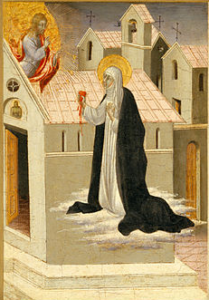
Excess or Eucharistic
Access In Spheres I, the author Peter Sloterdijk will suddenly reveal when he is talking about “thinking the inner space”, that his initial inspiration is due to Gaston Bachelard “who, with his phenomenology of material imagination and, especially for his studies of psychoanalysis of the elements, brought us a treasure trove of luminous insights to which it is always necessary to return ”(page 91).
reveal when he is talking about “thinking the inner space”, that his initial inspiration is due to Gaston Bachelard “who, with his phenomenology of material imagination and, especially for his studies of psychoanalysis of the elements, brought us a treasure trove of luminous insights to which it is always necessary to return ”(page 91).
It makes a surprising revelation, I reaffirm its keen religious sense even though it states the opposite, stating that due to Bachelard “every man, by the simple fact of looking inward, becomes a Jonah or, more exactly, a whale and a prophet together in one person” (page 91), and indicates that he will follow these indispensable intuitions.
Such is the end of this introduction where it states: “the fundamental risk of all intimacy … destroyer comes closer to us than the ally” (p. 92) but if it were the other way around. It connects the cardiac issue to the eucharistic excess, it will explore the idea of the heart by initially linking it to two Japanese expressions that have more complete cosmogonies: kokoro (heart, soul, spirit, sense) and hara (belly and center of the body), citing the work of Guido Rappe.
Then the Western culture returns, taking the writing Herzmaere from the poet Conrado de Wüzburg that was produced in the 1260s, and the account of confessor Raimundo de Padua of Catarina de Siena, who is in Vida dos Santos, where a mysterious exchange of the mystical took place with the heart of Christ (above painting by Giovanni di Paolo), he will also comment later on the writing De amore by Marcílio Ficino on Plato’s Banquet from 1649.
The medieval tale of Würzburg is the recurring exchange of hearts, the author mentions only in the Decameron there are two passages, but it is in the analysis of Catarina de Siena that there are vital points.
He will say that it is not possible for the human to level himself with the divine except for its absolute annulment, and this is “the situation of mystical exception, however, the metaphysical cleavage between the poles is leveled out.” (page 103). It will state that it is “pure subjectivity reaches the hot zone of the subject being totally dematerialized, not represented” (page 103), follows the reasoning until saying that it is “hysteria”.
For the philosopher, the mystic’s desire was, from the beginning, not so much to welcome “the Other in itself as to plunge herself into the aura of the Other” (page 106), here I transform excess into access, for Christianity there is no excess, and it’s there the divine to submit to being “devoured” in the Eucharist by the creature, and thus give him access to the inaccessible: the transubstantiated divine, in an anti-aortic reaction.
His saga penetrates even more in the Christian mystique, especially the Catholic one, when speaking of the wounds of San Francisco, the exhumation of the body of Felipe Neri, that would have found a hand-wide flaw, and this when having access (or excess as the author wants) the Eucharist: “when receiving the host, edema of the mouth and cheeks that gave the impression that he was gagged.” (page 115).
This reading is important in the Christmas period, because the author himself affirms that since the beginning the church has been embarrassed “in the face of the embarrassment of having to correctly determine the proportion in which the entry of God into the realm of human beings” (page 126 ) because this is exactly an excess (as the author wants) that gives access (who does not believe).









